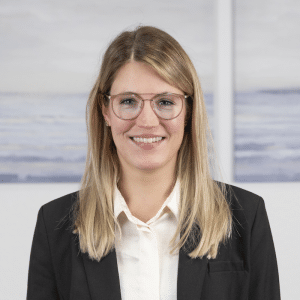If there is a contractual prohibition of modification and a work can be used unchanged, the author is not obliged to agree to a modification in “good faith”. In the event of unlawful use, a professional photographer can refer to the MFM table to quantify his license damages.
Unlawful processing and use on the website
A well-known and successful fashion and people photographer with over 16 years of professional experience created several photos on the subject of “hairstyles and fashion” for one of his clients, which were to appear in a magazine. In his general terms and conditions, he prohibited any digital or analog editing of his images, including the alteration of metadata. He also agreed not to be named in any advertising use.
One of the images was passed on by the client (to the now defendant). This defendant website operator had cropped the image at the edges without consulting the photographer and published it without attribution.
Consent cannot be imposed
The photographer sued the website operator for injunctive relief and payment of damages. The Regional Court of Cologne (judgment of 19.05.2016 – 14 O 283/15) largely agreed with the photographer and prohibited the use of the image on the website. Only an infringement of the moral rights of the author was not seen.
The judges emphasize that the GTC are decisive for the scope of permitted use. Although not directly for the use on the website of the defendant operator, but for the photographer’s client. According to the GTC, the latter had no permission to grant third parties – such as the defendant – the right to edit the images. There was therefore no effective license chain.
The editing prohibition could also not be circumvented pursuant to Section 39 para. 2 UrhG could not be circumvented. The scope of application of § 39 UrhG, not to be able to deny consent in good faith, had not been opened. The limitation provision is to be interpreted narrowly and finds its limits according to para. 1 where “otherwise agreed”. Such an agreement had been made within the framework of the GTC. The photographer’s consent would have been required for any editing.
Moreover, in case of doubt, a decision should be made in favor of the author against the user’s right to make changes. In particular, there is no bona fide industry practice that would allow a change. According to the court, this “bad practice” would only prevail in some areas because the author is the economically weaker party. If a work can be used unchanged, the prohibition of modification should be upheld.
MFM table applicable
Based on the recommendations of the MfM table, the judges awarded the photographer license damages in the amount of €465.00 per photo.
It is irrelevant whether the user would have been willing to pay remuneration and what value he subsequently attaches to the use. As a starting point, the MFM table is also suitable for determining the appropriate remuneration. Like many other courts, the Regional Court of Cologne does not apply the recommendations schematically. In the present case, however, the recommendations were suitable in the context of the judicial review required pursuant to sec. § 287 ZPO to quantify the license damages.
Naming was required
A surcharge of 100% (i.e. a further €465.00 per photo, €930.00 in total) due to the lack of copyright attribution was also appropriate as material damage. In the case of professional photographers, this already justifies the lost advertising opportunity and the loss of potential new orders.
This is also not contradicted by the fact that the photographer made an exception to the naming obligation in his general terms and conditions for use in advertising. This is because these GTC do not apply directly to the defendant user, but only to the client. In addition, the unlawful user violated the license terms, which only permitted the unaltered use of the images. Against this background, Section 13 UrhG applies without restriction.
10,000 € value in dispute for a photo
In summary, the Regional Court of Cologne has issued a judgment that is interesting in several respects. It refers to various aspects that repeatedly play a role in practice.
In the case of warnings in photo law, the question of the appropriate amount, the user’s obligation to give credit and the scope of permitted editing repeatedly arises for those affected. Many companies also get into legal difficulties if they rely on the assurance of a (supposedly) authorized party that “everything is fine with the image rights”.
In such cases, the only option is often to take recourse against the party giving the assurance so as not to be left with the costs. Incidentally, these are not insignificant. The court has assumed a value of €10,000.00 for a photo as the amount in dispute for injunctive relief.
Note on our own behalf: RA Florian Wagenknecht was consulted by the plaintiff in the aforementioned proceedings.



